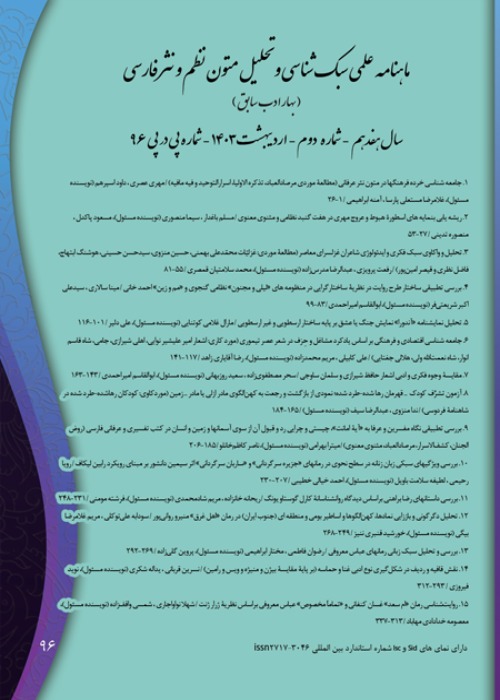Rereading and analyzing nine ancient love poems
Love stories are one of the rich types of Persian poetry that have always been the manifestation of delicate feelings and pristine thoughts of Parsigo poets. There are several love stories in Persian literature, which in this article analyzes and compares nine love poems in the medieval history of Iranian literature (four to six). These works include Zal and Rudabeh, Goshtasb and Katayoun, Soodabeh and Siavash, Bijan and Manijeh, Wameq and Azra, Vargheh and Golshah, Khosrow and Shirin, Lily and Majnoon, and Weiss and Ramin. Time period, narrative originality, ending, type of love and storytelling are examined and compared.
The method of data collection in this article is library and the analysis is based on the content analysis method and is qualitative. In this article, the content features of the poems are studied and the focus of the research is on the verses that have the highest frequency of stylistic commonality and the expression of independent verses is avoided.
In all systems, lovers are human, male and female. Also, all works have a nonallegorical expression. Five of the nine stories (about 55%) are set in an epic context and are a mixture of richness and epic. The endings are "happy and with the carpenter" in five stories (55%), "unfortunate: death of both parties" (33%) and in one story (11%) "unknown"; Therefore, the frequency of happy ending is higher than the end of unhappy. In terms of origin, the highest frequency belongs to the type of myth (five cases: 55%), then semi-historical (two cases: 22%), unknown (one case: 11%) and imaginary (one case: 11%). In terms of time, eight stories (88%) are pre-Islamic and one story (11%) is post-Islamic. In terms of originality, five stories are of the original type (55%) and four stories are of the adaptation type (44%). Of these four stories, three are adapted from Arabic, and one (Wameq and Azra) has Greek origins.
All stories are narrators of earthly love; With the difference that in stories such as Lily and Majnoon, and Vargheh and Golshah, love is an excuse and chastity and goes towards heavenly and mystical tendencies. In most of these stories, the problems and obstacles of the union of two lovers are of the type of differences between family, race and lineage or tribe. Women play an active role in most of these stories and are sometimes the main actors and initiators.
- حق عضویت دریافتی صرف حمایت از نشریات عضو و نگهداری، تکمیل و توسعه مگیران میشود.
- پرداخت حق اشتراک و دانلود مقالات اجازه بازنشر آن در سایر رسانههای چاپی و دیجیتال را به کاربر نمیدهد.



